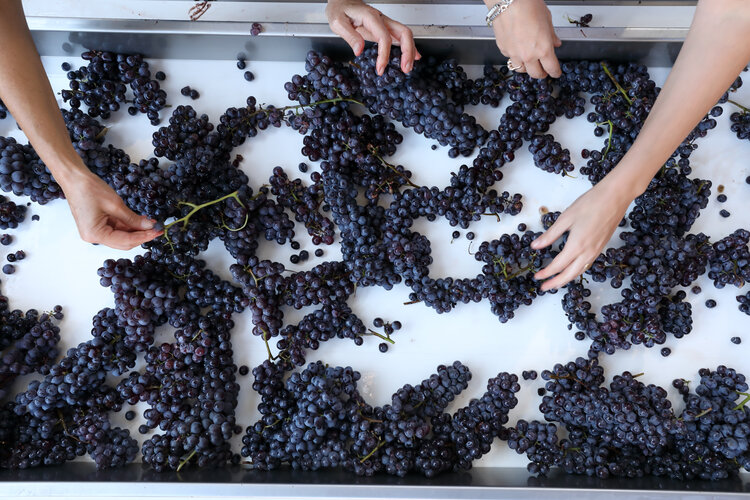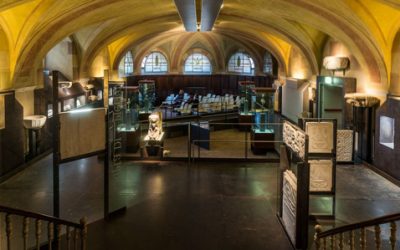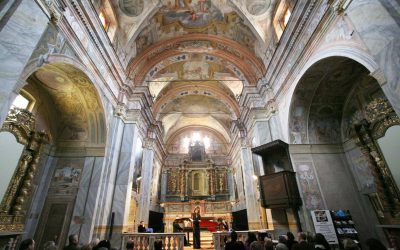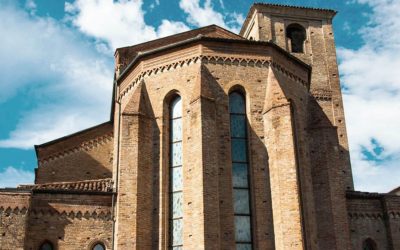Harvest season in Piedmont region
Piedmont, a region tucked in the northwestern corner of Italy, is renowned worldwide for its diverse and high-quality wines. Home to over 40 DOC and 17 DOCG areas, Piedmontese wines like Barolo, Barbaresco, and Barbera have marked their presence on the global wine stage. Here, the varying climate and the geographical diversity cater to the growth of numerous grape varieties, each adding a unique flavor to the region’s wine repertoire.
Harvest season in Piedmont region
The harvest season in Piedmont is truly a magical time. Not only does it signify the start of the winemaking process, but it also brings with it a festive atmosphere that is palpable throughout the entire region. It’s during this period that you can witness the dedication and passion of the winemakers as they handpick each grape, adhering to tradition and their intimate knowledge of the land.
From the full-bodied and richly flavoured Barolo that’s harvested in late September to mid-October, to the bright and fresh Arneis picked in mid-September, each variety has its unique schedule. Timing is everything when it comes to the harvest. Winemakers carefully monitor the weather, the ripeness of the grapes, and several other factors to choose the perfect moment to begin the harvest. It’s a process steeped in tradition and driven by intuition, and the result is some of the most exquisite wines in the world.
As the vine leaves change color, painting the landscape in hues of red and gold, there’s a distinct chill in the air. It’s during this time that Piedmont turns into a haven for wine lovers. Wine festivals abound, each celebrating the region’s wine heritage in its unique way. Whether it’s the Alba White Truffle Fair, Barbaresco Harvest Festival, or the Douja d’Or in Asti, there’s an array of events that offer a deep dive into the region’s winemaking tradition. Each festival is a sensory delight, offering the opportunity to sample a variety of wines, savor local delicacies, and immerse oneself in the regional culture.
Indeed, the harvest season in Piedmont is more than just about the production of wine. It’s a celebration of the region’s rich viticultural heritage, a testament to the bond between the land and its people, and an invitation to experience the very best of Piedmontese hospitality. So whether you’re a wine connoisseur or a casual enthusiast, visiting Piedmont during the vendemmia is sure to be an unforgettable experience. 🍇🍷🍁
| Wine | Typical Harvest Time | Key Characteristics |
|---|---|---|
| Barolo | Late September – Mid October | Powerful, tannic, rich in flavors like cherries, plums, and licorice. Aged for a minimum of 38 months before release. |
| Barbaresco | Mid September – Early October | Elegantly structured, with lower tannins and less concentration than Barolo. Notes of strawberries, cherries, and spices. |
| Barbera | Mid September – Late September | Bright acidity, full-bodied with flavors of black cherry and plum. Often aged in oak to add complexity. |
| Dolcetto | Early – Mid September | Fruity, easy-drinking wine with low acidity. Notes of blackberry, plum, and licorice. |
| Asti & Moscato d’Asti | Early – Mid September | Sweet, sparkling wines with notes of peach, honey, and citrus. |
| Arneis | Mid September | Dry and fresh white wine with aromas of pears, apricots, and almonds. |
Please note that these are the typical harvest times and might vary depending on the year’s climate and the winemaker’s preference. It’s always best to check with individual wineries for the most accurate information.
Harvest season in Langhe: The Cradle of Barolo and Barbaresco 🌄
The hilly area of Langhe is one of the most prestigious wine regions in Italy. It’s best known for producing Barolo and Barbaresco, two of the world’s finest wines, both made from the Nebbiolo grape. The unique terroir, defined by clay and limestone soils, along with a favorable climate, results in wines with notable elegance and complexity.
Harvest season in Roero: Land of Arneis White Wine 🥂
Across the Tanaro River from the Langhe lies Roero, a region famous for its aromatic white wines, particularly Roero Arneis. The sandy soils of the Roero hills contribute to creating a crisp, floral, and fragrant white wine, a delight for the senses. While Roero may not share the same global fame as Langhe, its wines are undoubtedly a gem in Piedmont’s crown.
Harvest season in Monferrato: Between Dolcetto and Barbera 🍷
The Monferrato is a beautiful hilly region recognized primarily for its Barbera and Dolcetto wines. Barbera d’Asti, a deep ruby red wine known for its robust character and versatility, is particularly acclaimed. Simultaneously, Dolcetto, or the “little sweet one”, makes for an easy-drinking red that pairs perfectly with everyday Italian cuisine.
Best Wine Tours and Tasting Experience in Langhe, Roero and Monferrato

Italy’s Piedmont region, with its Langhe, Roero, and Monferrato districts, offers some of the world’s most notable wine tours and tastings. The region is well-known for its rich viticultural heritage and exceptional wines like Barolo, Barbaresco, and Asti Spumante. Here are some of the best wine tours and experiences that you can consider:
- Barolo Wine Tour: This tour includes visits to vineyards and wine cellars in the Barolo region, known as the “king of wines and the wine of kings”. You’ll taste a variety of Barolo wines and learn about their unique characteristics and the complex winemaking process involved.
- Barbaresco Wine Experience: Similar to the Barolo tour, this experience takes you through the charming Barbaresco region. Here, you’ll get to sample the elegant Barbaresco wines, explore the vineyards, and understand how the unique terroir of this region contributes to the wine’s characteristics.
- Roero Wine Tour: Known for its sandy soils and the production of aromatic white wines from Arneis and robust reds from Nebbiolo, the Roero district provides a distinct wine experience. A tour here would include tasting sessions and opportunities to learn about Roero’s unique winemaking traditions.
- Monferrato Wine Experience: Monferrato is a UNESCO World Heritage Site known for Barbera and Moscato wines. A tour here would include visiting historic cellars, tasting the rich and bold Barbera or the sweet Moscato, and learning about the region’s viticulture history.
- Truffle Hunt and Wine Tasting: Truffles are another treasure of the Piedmont region. Some tours offer the chance to join a truffle hunter and his dog to search for the rare and prized Alba white truffle. The hunt is often followed by a truffle-themed lunch and wine tasting.
- Cooking Classes and Wine Pairing: For a complete gastronomic experience, opt for a tour that combines a cooking class with wine tasting. You’ll learn how to prepare traditional Piedmontese dishes, and then enjoy your creations paired with local wines.
Remember, the best time to visit for wine tasting is during the harvest season (September and October), when you can see the winemaking process in action. But any time of the year will provide a memorable experience as the cellars are always open for visitors. Always check with the individual wineries for their visitor policies and consider booking in advance.
Miravalle 1926 – Barolo Harvest 2022

Barolo: The “King” of Piedmontese Wines 🍷
Often referred to as the “King of Wines and the Wine of Kings“, Barolo is arguably Piedmont’s most famous wine export. Made from Nebbiolo harvest Barolo wines are rich, full-bodied, and packed with tannins, making them excellent for aging. They’re characterized by their profound flavors of red cherries, roses, and hints of truffles, truly capturing the spirit of the Langhe terroir.
Barbaresco: The “Queen” of Nebbiolo Wines 👑
Considered Barolo’s sibling, Barbaresco is another highly esteemed Nebbiolo wine. It’s generally less tannic and matures faster than Barolo, making it more approachable at a younger age. Despite these differences, Barbaresco also exhibits the complex flavors of red fruit, roses, and anise, expressing the elegance of the Piedmont region.
Dolcetto: The Everyday Wine of Piedmont 🍇
Dolcetto is a popular red grape variety widely grown in Piedmont, particularly in the Dogliani area. The wines made from Dolcetto are known for their deep purple color, fruity flavors of blackberry and plum, and light tannins. Dolcetto wines are generally enjoyed young and pair well with a wide range of food, making them a favorite everyday wine in the region.
Asti and Moscato d’Asti: The Sparkling Treasures 🍾
Not just famous for its reds, Piedmont is also home to Asti and Moscato d’Asti, two sparkling white wines made from the Moscato Bianco grape. Asti, known for its sweet, fruity flavors and floral aroma, is fully sparkling, while Moscato d’Asti has a gentle effervescence. Both wines are dessert staples and are especially enjoyed during festive occasions.
Arneis: Piedmont’s Signature White 🥂
Roero Arneis is a white grape variety that has made a comeback in recent years after near extinction. Known as the “white Barolo,” Arneis produces a dry, fresh, and fruity white wine with aromas of pears and apricots. It’s a delightful alternative to the region’s well-known reds.
What are the traditions of harvest in Italy?
Grape harvest season, or “vendemmia” as it is known in Italy, is one of the most important and festive times of the year in the country’s many wine regions. There are numerous traditional activities and practices associated with the harvest. Some of these include:
- Manual Harvesting: Many Italian wineries still opt for hand-harvesting the grapes instead of using mechanical harvesters. This is especially true for high-quality or steep vineyards. Workers often start in the early morning to avoid the heat of the day, using small crates to prevent the grapes from being crushed under their own weight.
- Grape Stomping: Though less common today due to modern winemaking methods, some places still uphold the tradition of grape stomping, known as “pigiatura.” This is where the grapes are crushed using bare feet to initiate fermentation. This practice is often featured in harvest festivals for visitors to experience.
- Harvest Festivals: The vendemmia is often celebrated with local festivals (“sagre”) across Italy’s wine regions. These celebrations can include grape stomping, wine tastings, music, parades, and feasts that feature local products.
- Blessing of the Grapes: In some regions, it’s traditional to have the season’s first grapes blessed by a priest before the harvest begins. This is a spiritual way to hope for a successful harvest.
- La Burasca: In Piedmont, there’s a tradition known as “La Burasca,” a festive meal held at the end of the grape harvest. All those who participated in the harvest come together to celebrate with food and wine, marking the end of a period of intense work.
- Cantine Aperte: Many wineries open their doors to the public during the harvest season for “Cantine Aperte” (Open Cellars). Visitors can tour the vineyards, watch or participate in the harvest, and taste the wines.
What month are grapes harvested in Italy?
These traditions provide a glimpse into the deep historical and cultural importance of winemaking in Italy, and many of these practices and festivities have been preserved over centuries. However, it’s important to note that practices can vary widely depending on the region and specific winery.
In Italy, the grape harvest, also known as “vendemmia,” usually begins in late August and can continue through October. The exact timing depends on several factors, such as the variety of the grape, the region’s climate, and the type of wine being produced.
Here’s a general timeline for a few Italian regions:
- Sicily: The grape harvest in Sicily usually begins in mid-August due to the region’s warm Mediterranean climate. Grapes for certain wines, like Moscato, may be harvested as early as late July.
- Piedmont: In northern regions like Piedmont, where it’s cooler, the harvest can start as late as September and extend into October. The Nebbiolo grape, used for Barolo and Barbaresco wines, is typically one of the last to be harvested, often in mid to late October.
- Tuscany: In Tuscany, the grape harvest usually begins in early September. Sangiovese, the main grape variety used for Chianti and Brunello di Montalcino, is typically harvested in late September to early October.
- Veneto: In the Veneto region, grapes for Soave and Valpolicella are typically harvested in September, while the grapes for Amarone, which need to dry before fermentation, may be picked as late as November.
These timelines can vary from year to year depending on weather conditions, and the decision on when to harvest is often made based on the balance of sugar and acid in the grapes, which will influence the character and style of the final wine.
Piedmont Harvest Season: A Celebration of Wine 🍇
The harvest season in Piedmont usually starts in September and continues through October, though the timing varies based on the grape variety and the climatic conditions of the year. It’s a time of intense activity and joy, with wineries bustling with energy. The grape harvest, or “vendemmia,” is often accompanied by festivals and events, making it an exciting time to visit the region.
Piedmont, with its range of unique and distinctive wines, is a paradise for wine lovers. Its wines truly encapsulate the diversity and richness of the region’s terroir, offering a palette of flavors and aromas for every taste. Whether it’s the king of wines, Barolo, the elegant white Arneis, or the effervescent Moscato d’Asti, the wines of Piedmont have something for everyone. So, here’s to discovering and enjoying the best that Piedmont has to offer, one glass at a time! 🥂🍷





